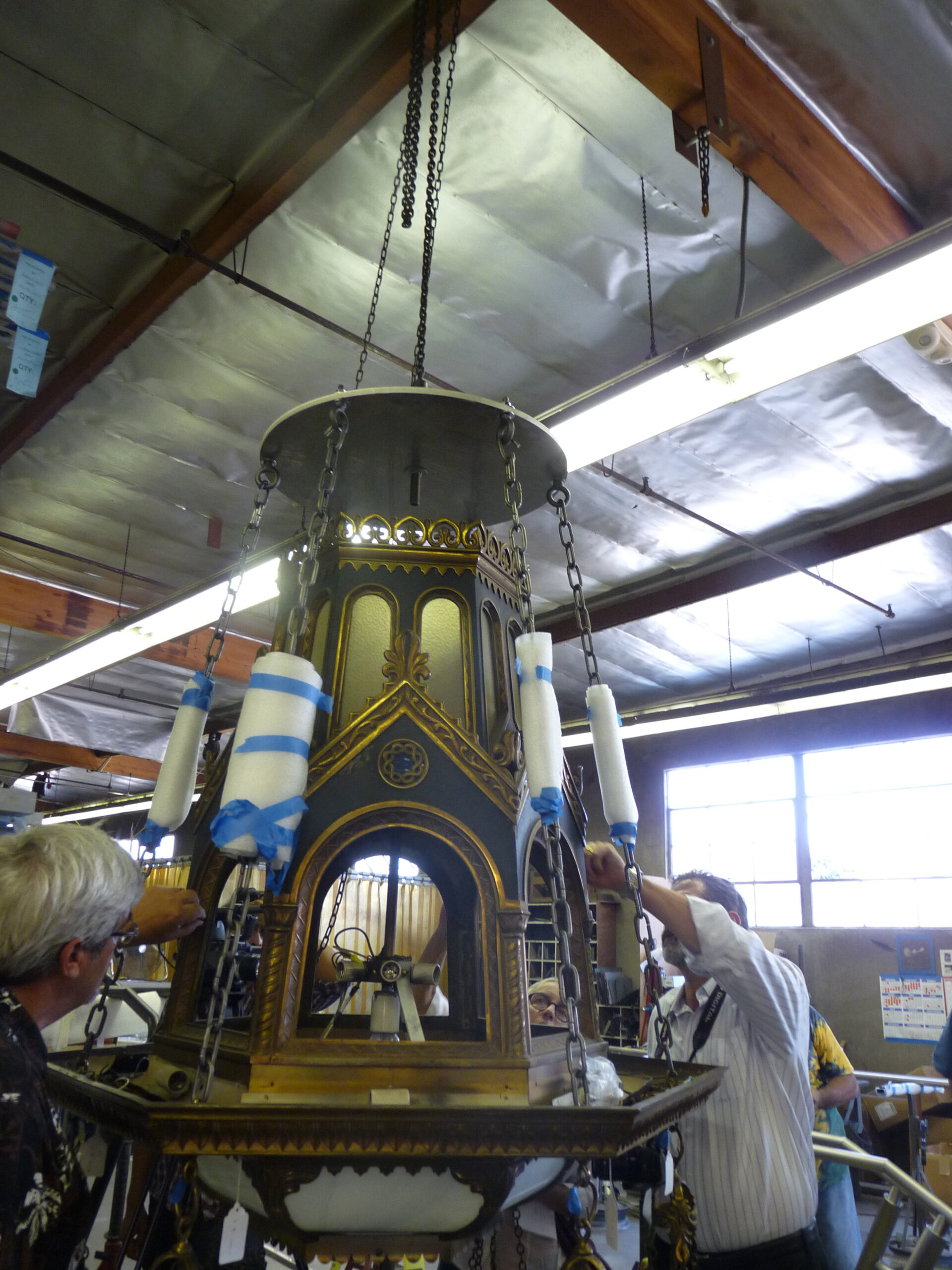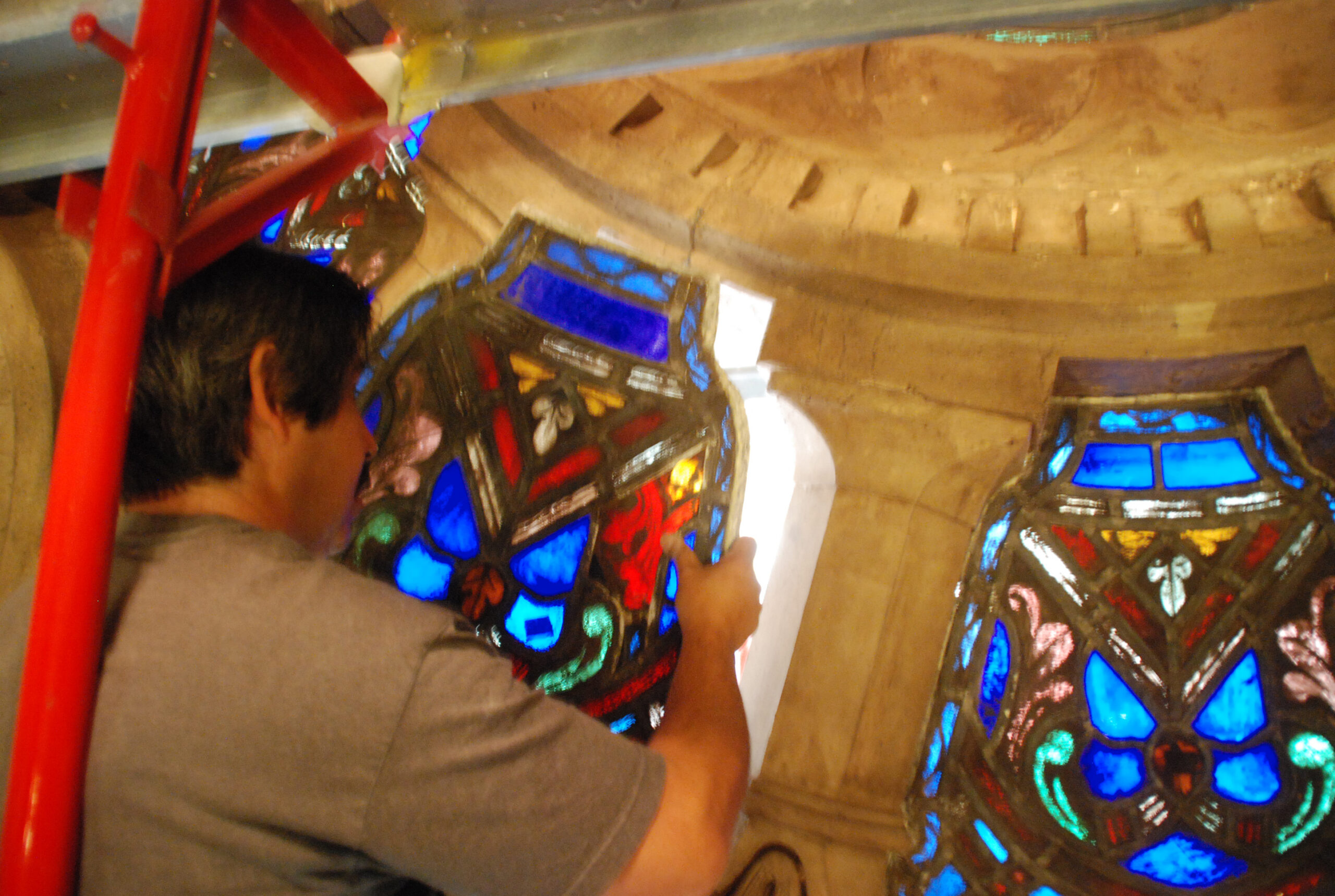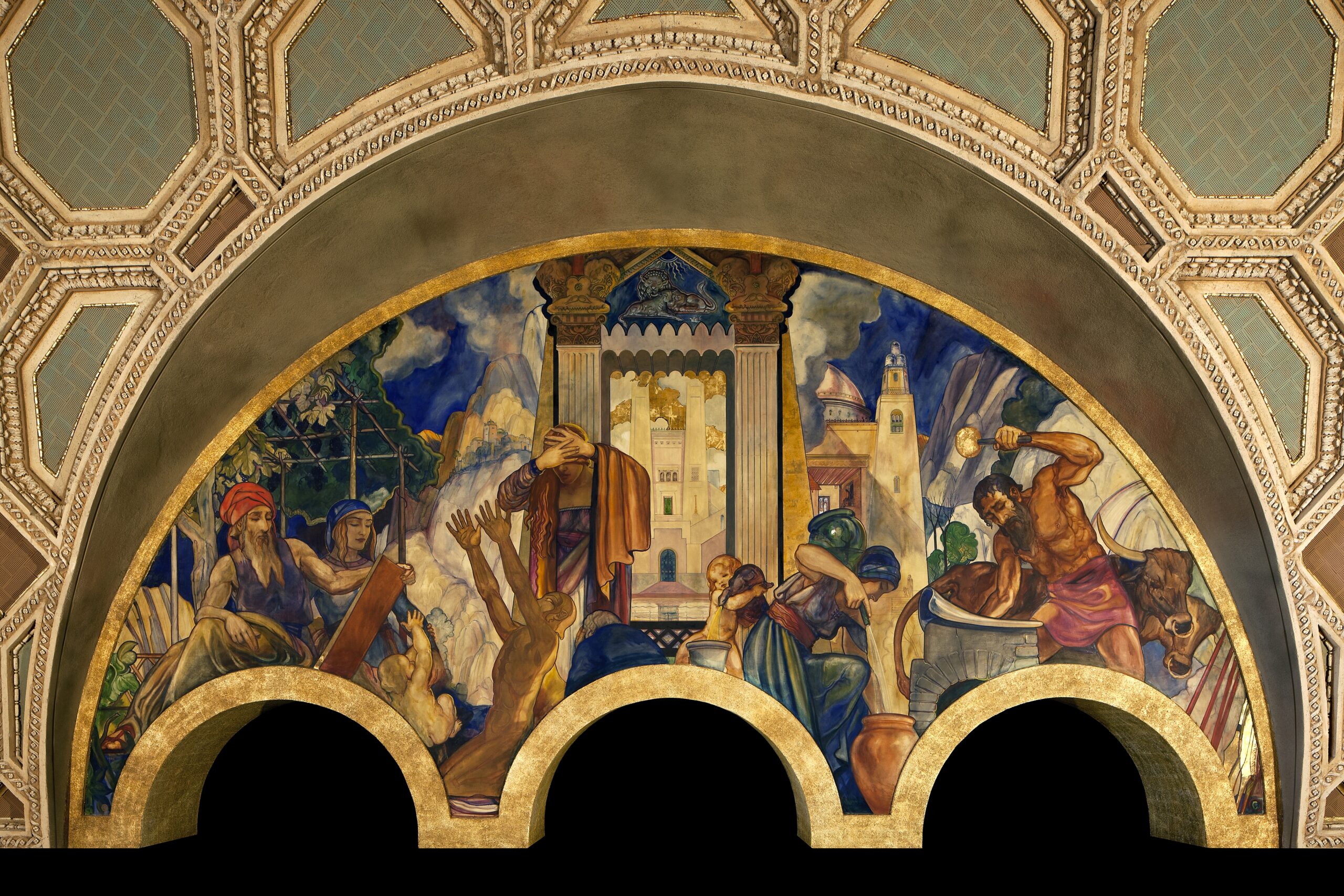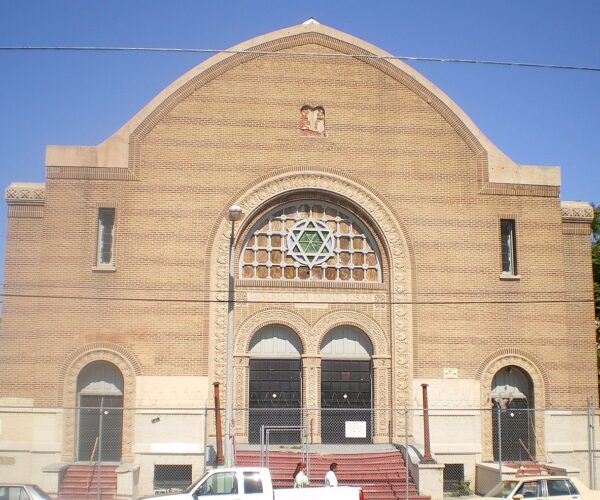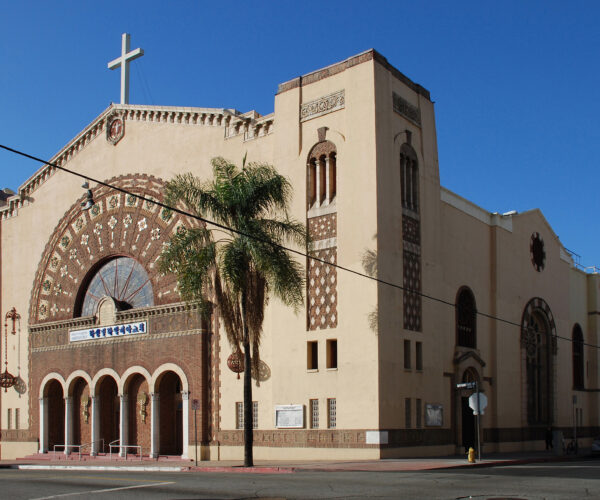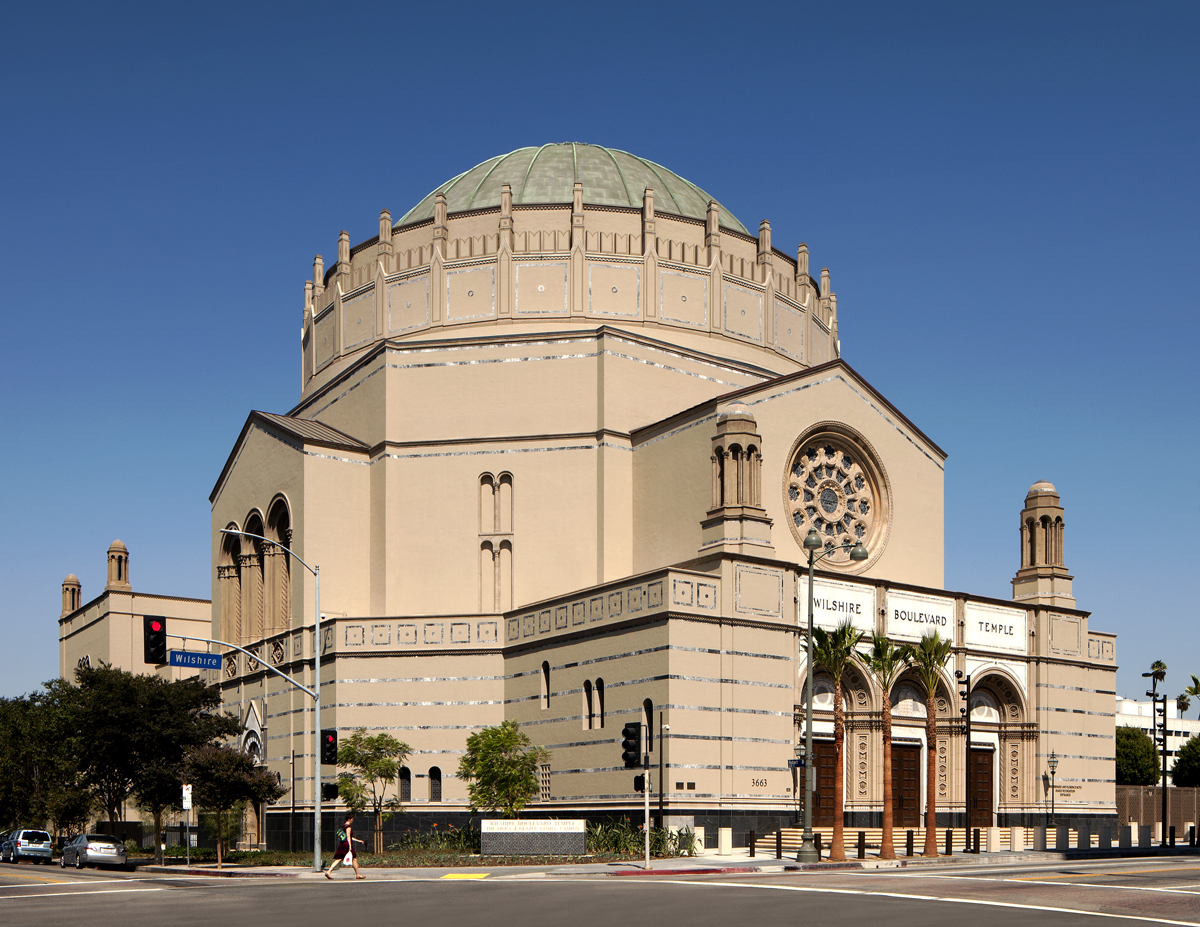
Place
Wilshire Boulevard Temple
The restoration of this beloved Wilshire landmark earned the Conservancy's President's Award in 2014.


Place Details
Address
Get directions
Architects
Year
Style
Decade
Property Type
Community
Wilshire Boulevard Temple serves as the third home of the Congregation B’nai B’rith, which was founded in 1862 and is the oldest Jewish congregation in Los Angeles. The congregation left each of its first two synagogues, both located downtown and both now demolished, as its size grew and as the city moved westward. The congregation purchased property at the corner of Wilshire and Hobart Boulevards in 1921.
Under the dynamic leadership of Rabbi Edgar F. Magnin, often called the “Rabbi to the Stars” because of his friends in Hollywood, the Congregation B’nai B’rith purchased property at the corner of Wilshire and Hobart Boulevards in 1921.
At the time, the Mid-Wilshire area was an upper-class suburban enclave with great commercial promise, sometimes called the “Fifth Avenue of the West.” Religious organizations of all denominations followed their members here as they moved west from downtown, and most of the churches were grand and impressive.
Wilshire Boulevard Temple was no exception. Dedicated in 1929 and built for a then-princely sum of $1.4 million, the octagonal building was designed by A. M. Adelman, S. Tilden Norton, and David C. Allison.
Its Wilshire façade combines a traditional Romanesque three-arch portal and rose window with a vast Byzantine dome spanning 100 feet and rising nearly 140 feet above street level.
The spectacular interior of the Edgar F. Magnin sanctuary is resplendent with black Belgian marble columns, teakwood doors, gold altar fixtures, and bronze chandeliers.
As a gift to the synagogue, the Warner brothers, founders of the famous Hollywood studio, commissioned artist Hugo Ballin to design breathtaking murals depicting 3,000 years of Jewish history. Louis B. Mayer, Irving Thalberg, Carl Laemmle, Sol Lesser, and Sid Grauman each donated funds for features such as stained glass windows, chandeliers, and marble columns.
In accordance with Rabbi Magnin’s wishes, the sanctuary was purposefully designed to look like a movie theatre, with a grand entrance; spacious lobby; broad, carpeted stairways leading to the balcony; and a dramatically domed and acoustically perfect auditorium with no central aisle.
Despite the building’s designation as a Los Angeles Historic-Cultural Monument in 1973 and listing in the National Register of Historic Places in 1981, its golden age passed. By the early 1990s, many congregants had moved west into other parts of the city, and the structure suffered from deferred maintenance.
The stunning Ballin murals were cracked and in need of conservation, plaster from the dome had cracked and fallen due to water damage, windows were bowed, and nearly every surface was dingy and dirty.
Temple leaders faced a difficult decision: sell the building and focus on their Westside facilities, or find the money to invest in its future. In 2004, the Temple’s Board of Trustees made restoring the building a priority.
The Jewish community responded in force, not only funding the restoration but continuing to raise money to expand the entire campus. The original building’s restoration and renovation spanned two years, from September 2011 to September 2013. It cost $47.5 million and required a vast range of specialists, focusing on the most significant threats to the sanctuary: the coffered dome ceiling, the stained-glass rose window and its surrounding cast stone, the west tripartite art glass windows, and the Hugo Ballin murals. The project to restore Wilshire Boulevard Temple earned a Conservancy Preservation Award in 2014.
The Temple is not only a symbol of religious vitality for Jews, but it will serve as an important resource for the immediate neighborhood, which is predominantly Korean and Latinx. The main sanctuary regularly holds cultural events open to the community.
In July 2014, the next phase of construction began on the renovation of two school buildings, a new structure providing social services such as a food pantry and health services, athletic facilities, and parking; and landscaped areas throughout the campus.
Temple leaders are working closely with other religious organizations, nonprofits, business leaders, and schools in the area to find creative solutions to bring positive change to the area.




